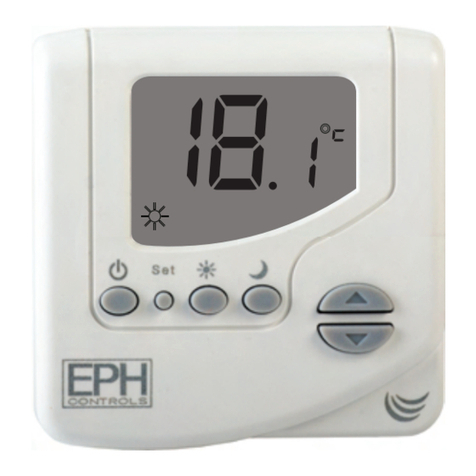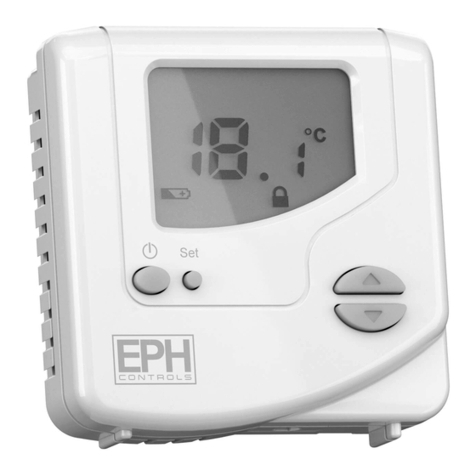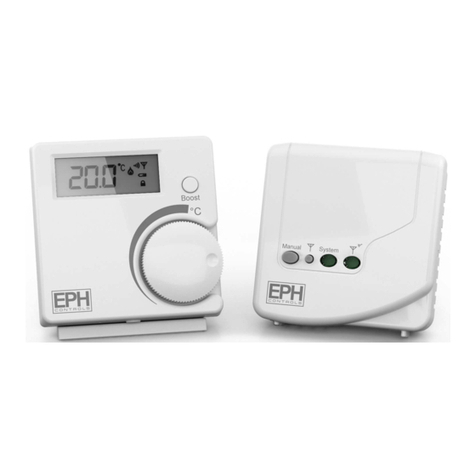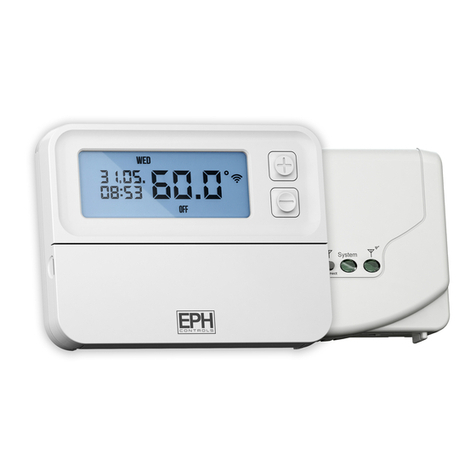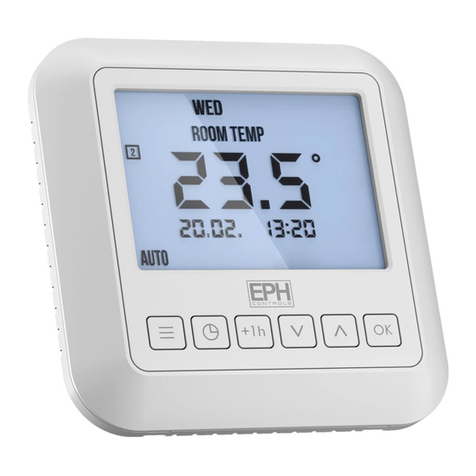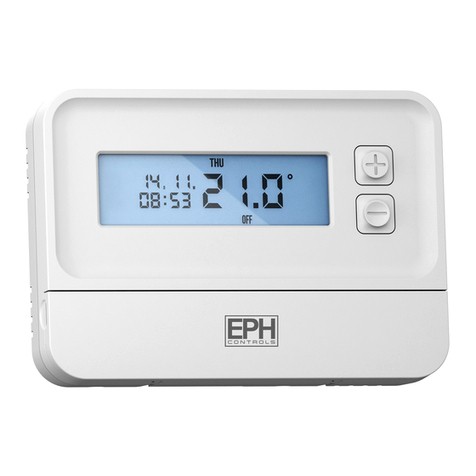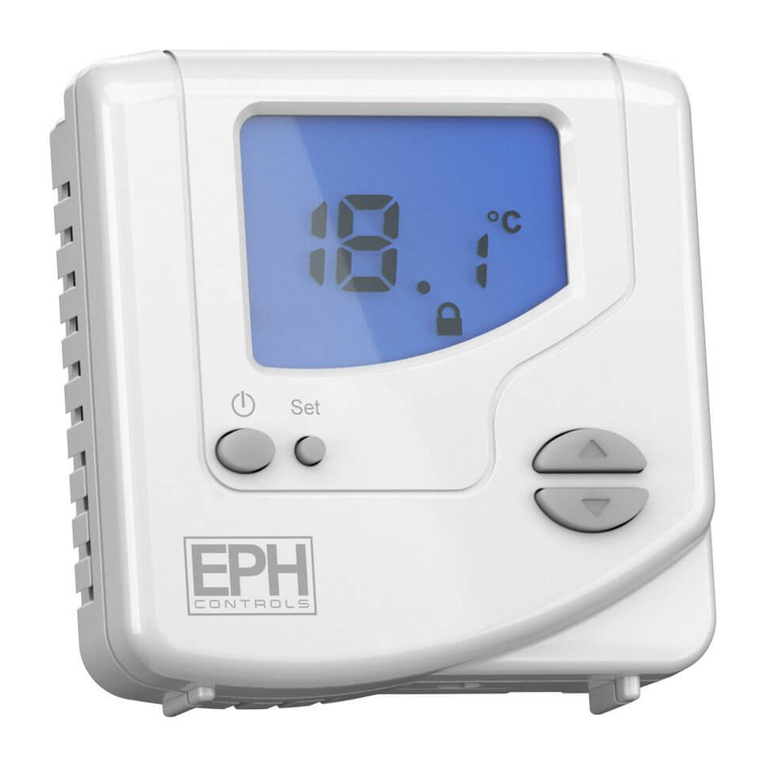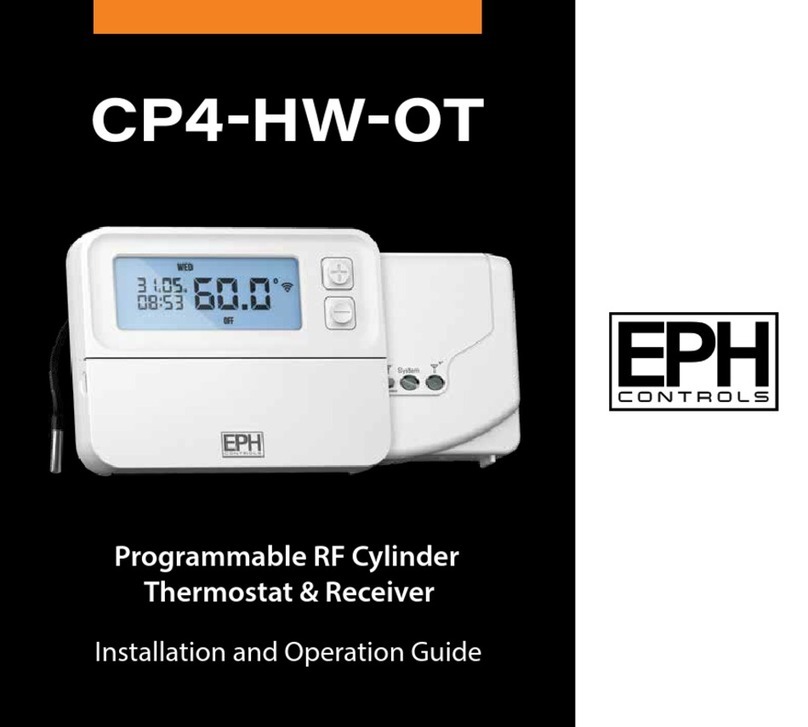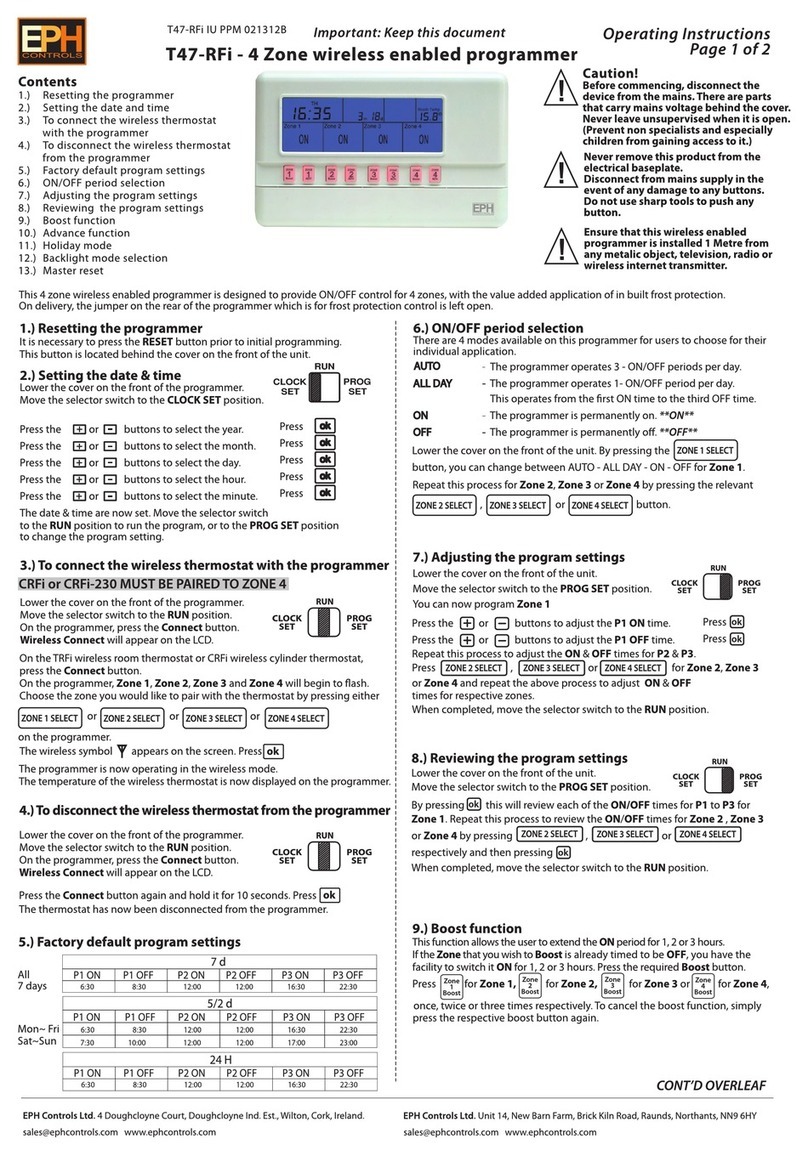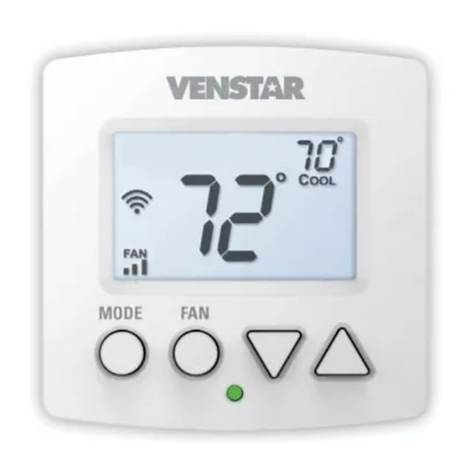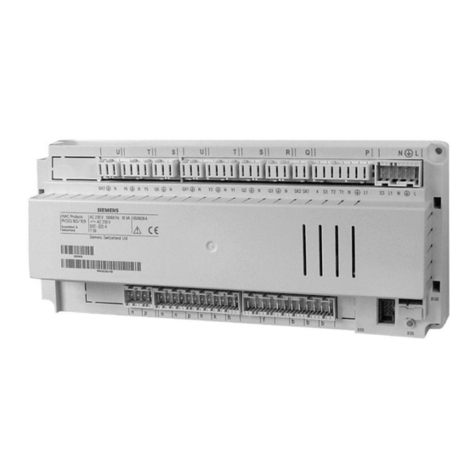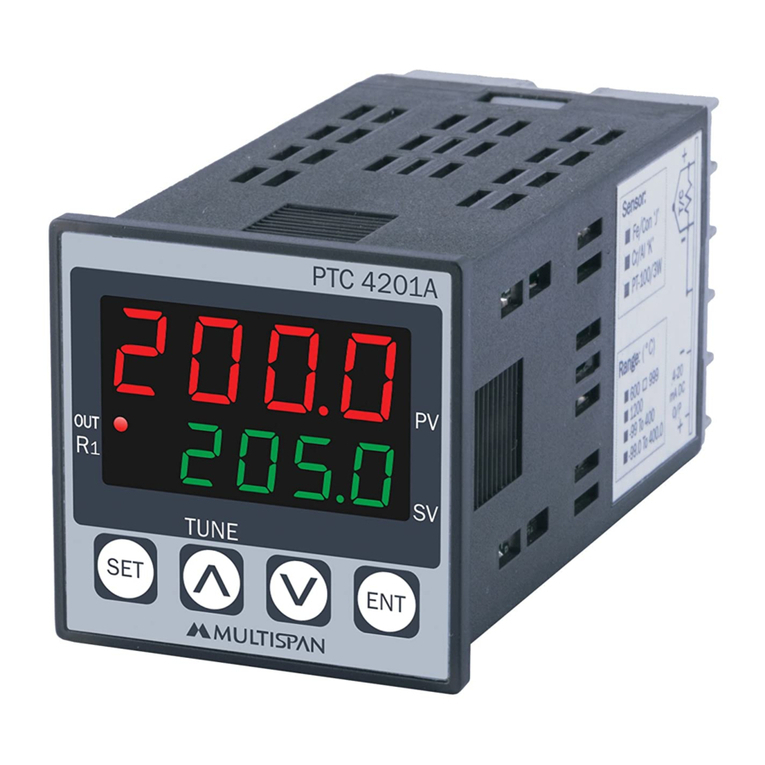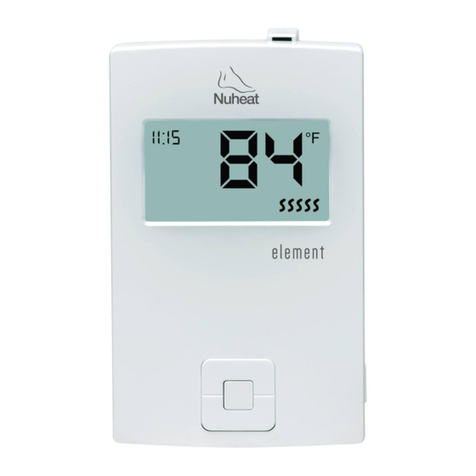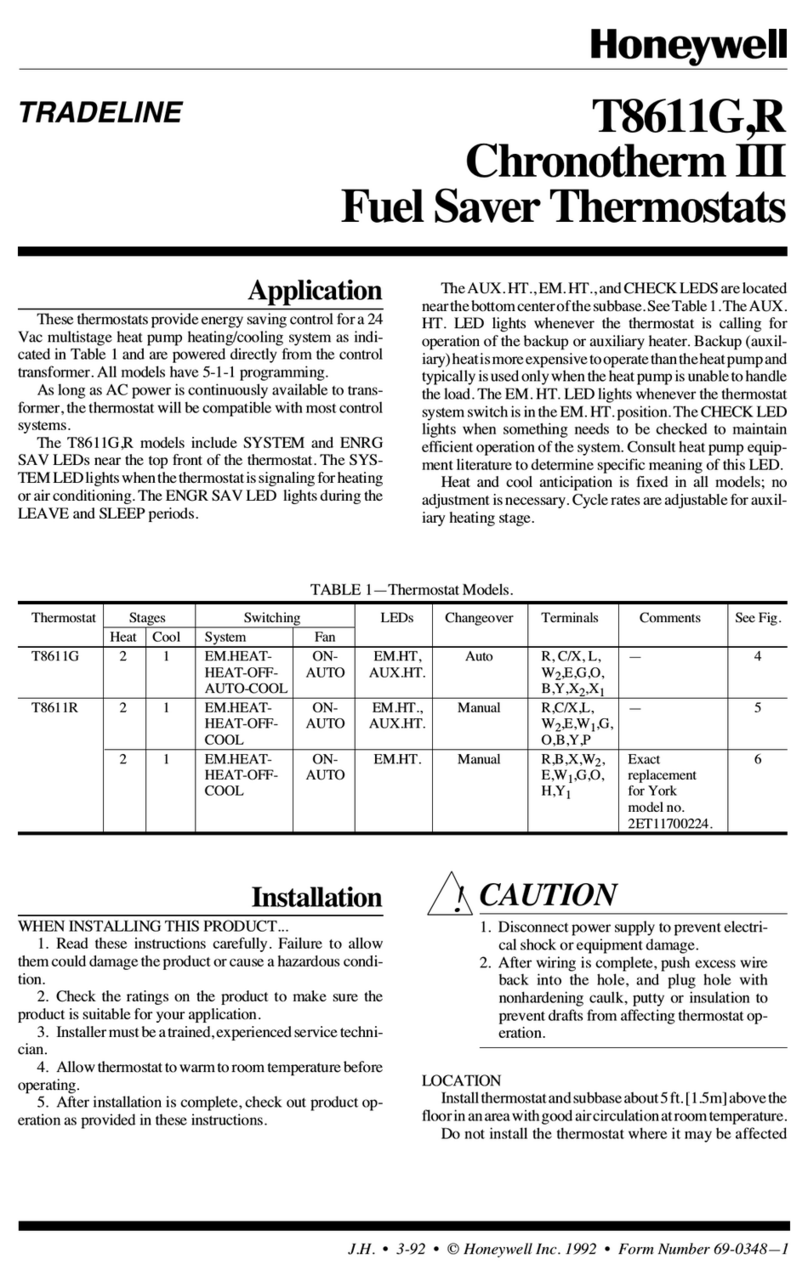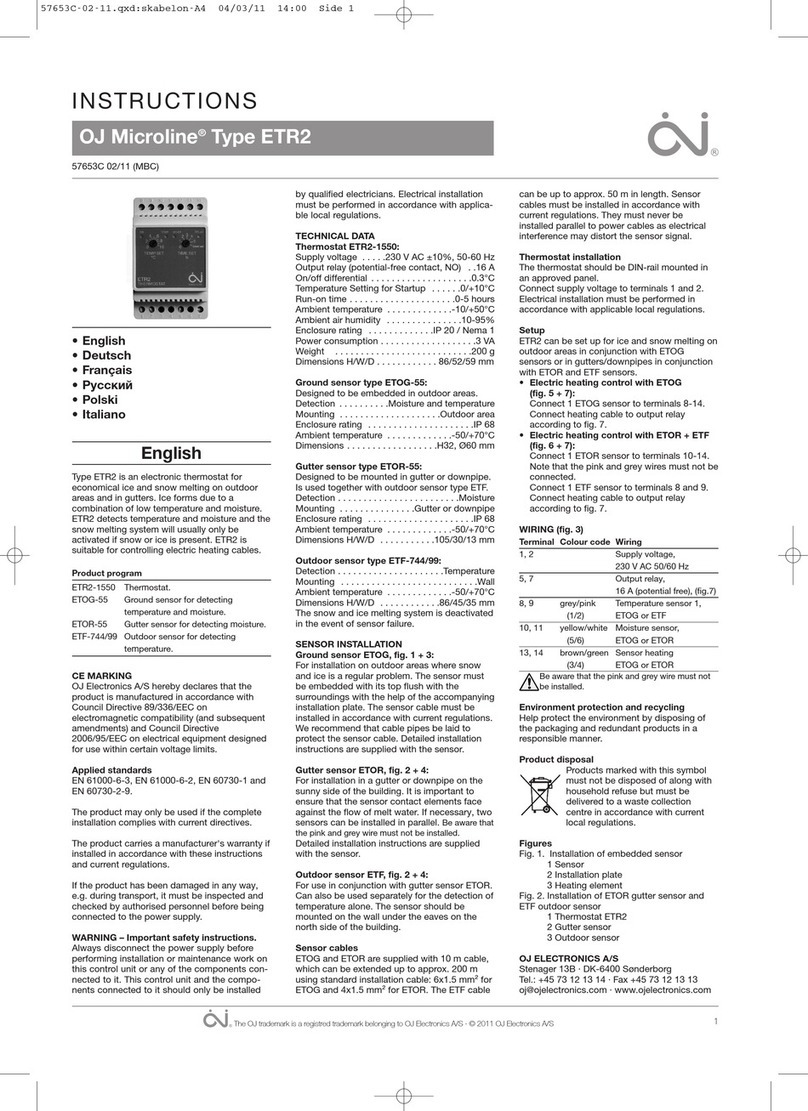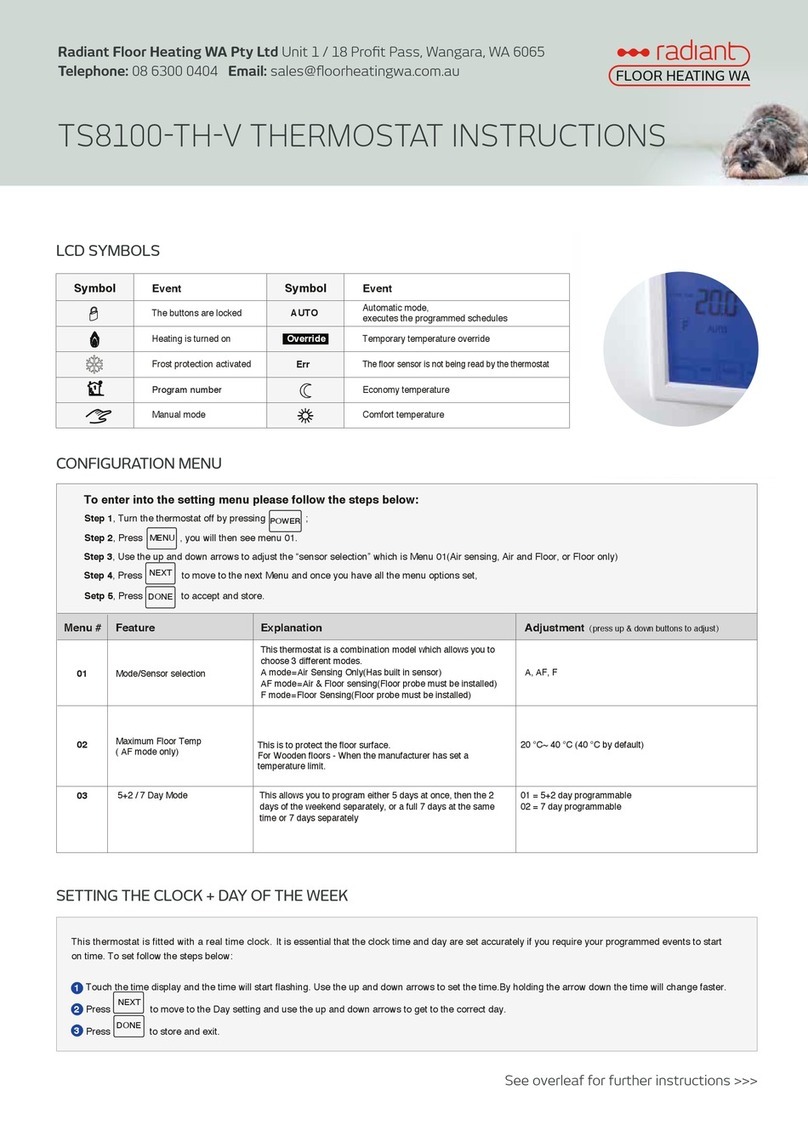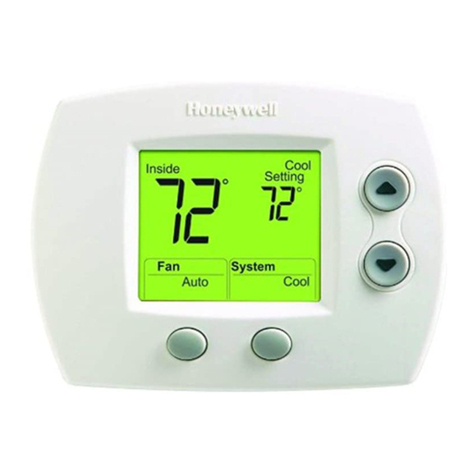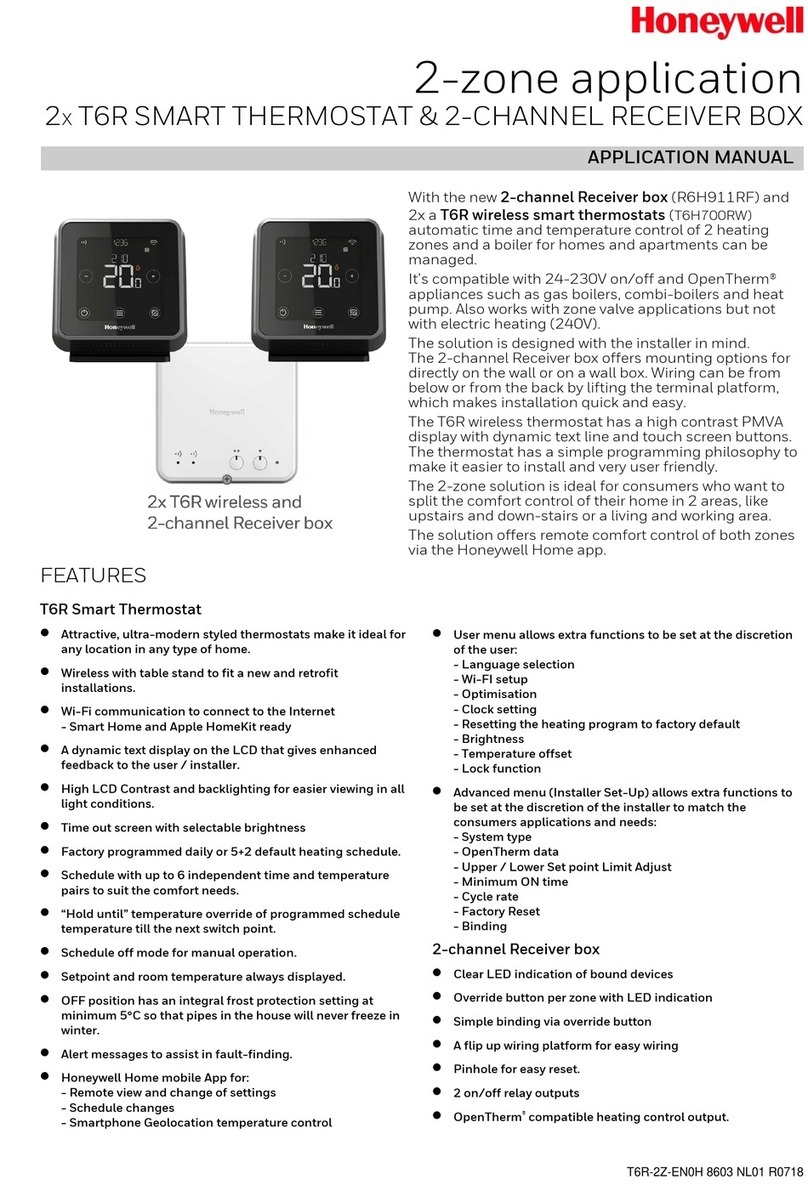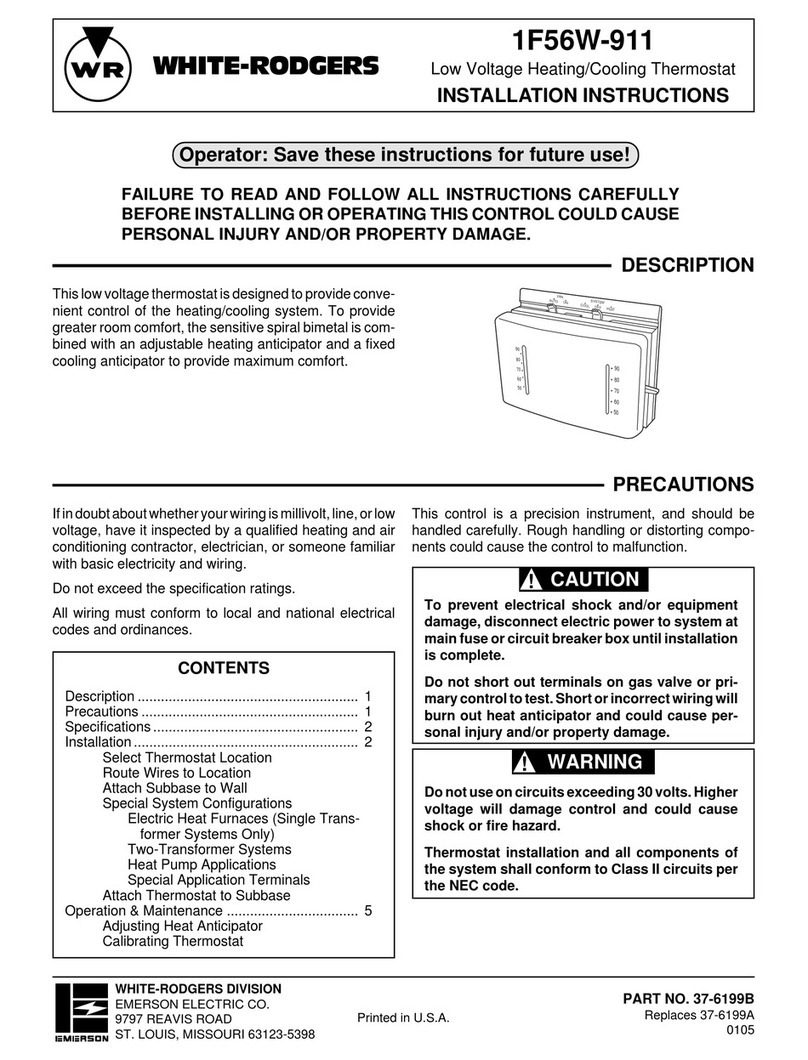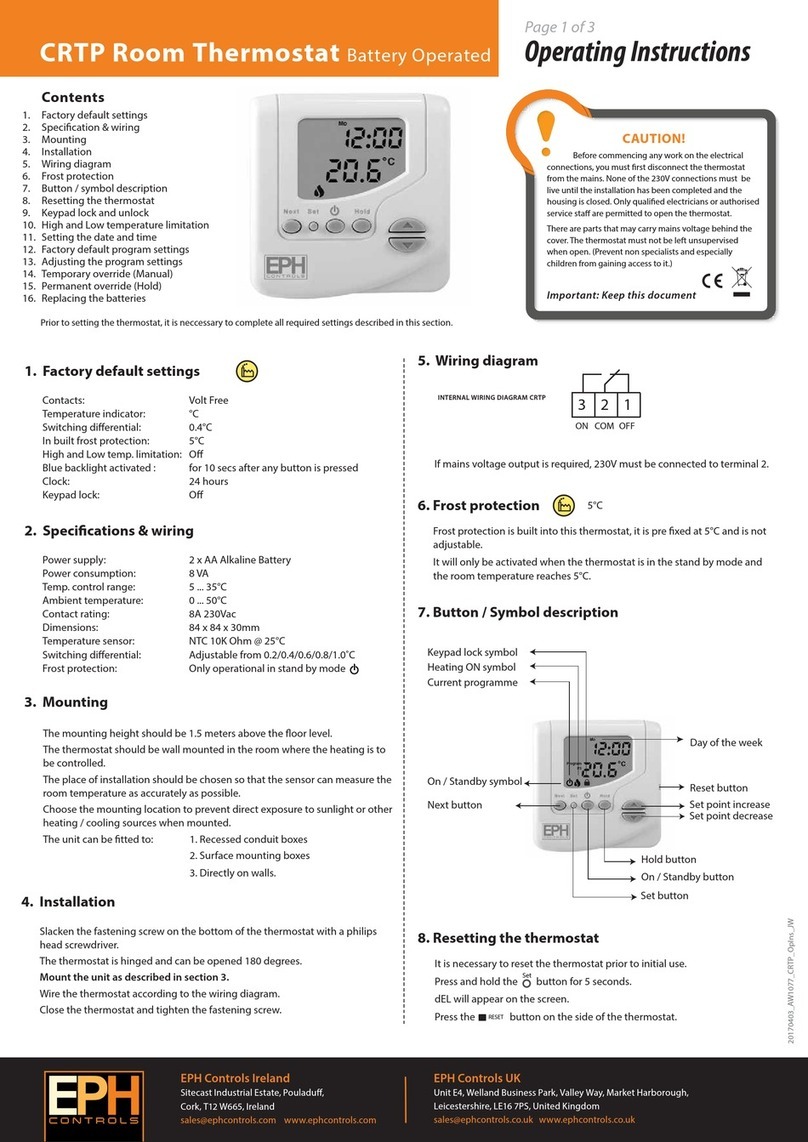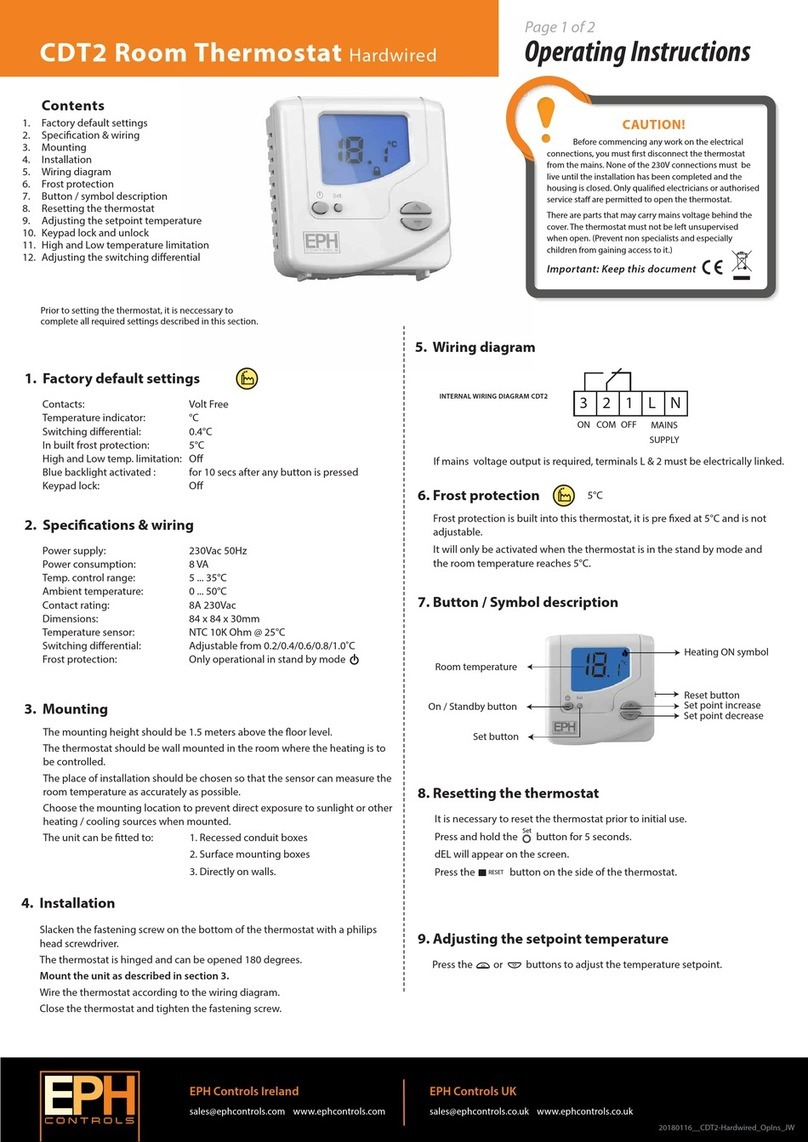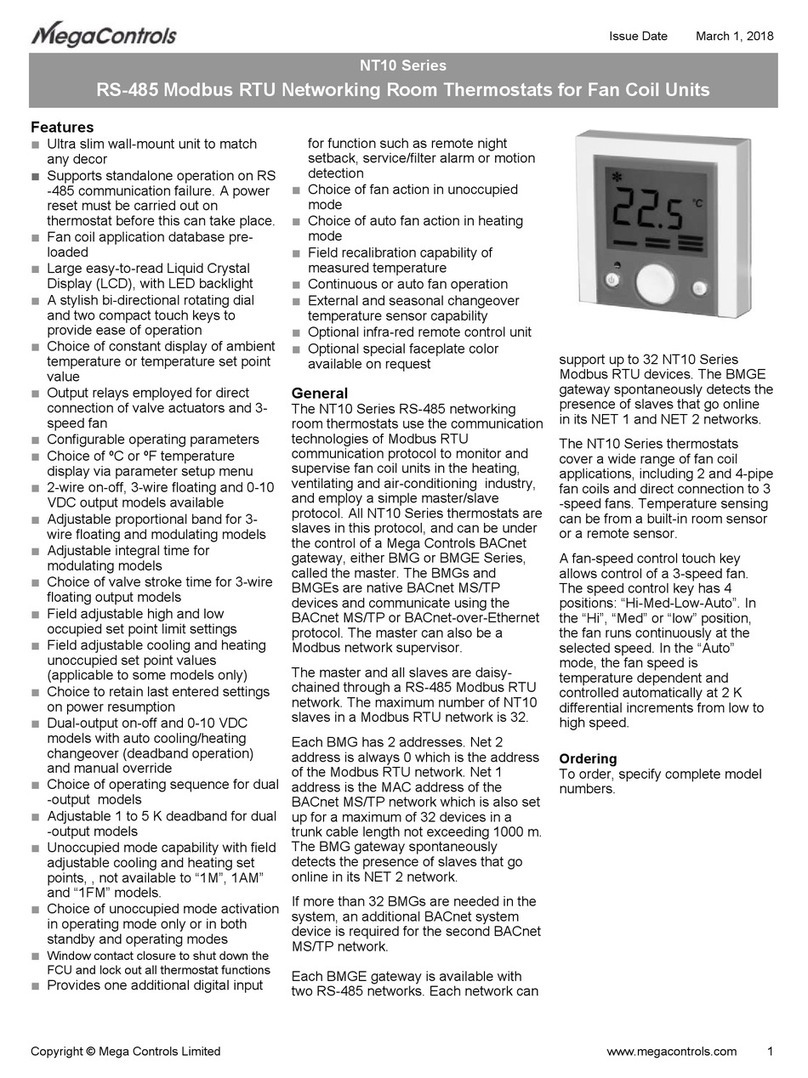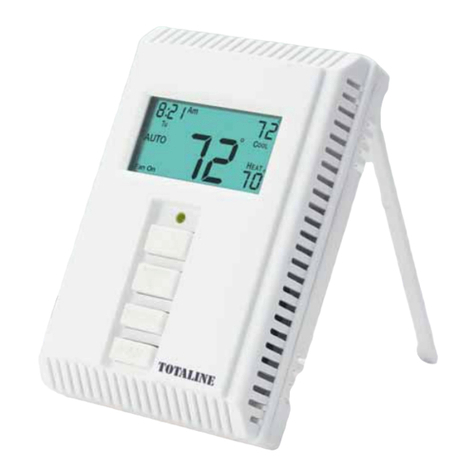
Operating Instructions
Page 2 of 3
CDT2 Room Thermostat with Delay Start
20221103_CDT2-230-DS-TPI_Opsins_PK
EPH Controls Ireland
technical@ephcontrols.com www.ephcontrols.com
EPH Controls UK
technical@ephcontrols.co.uk www.ephcontrols.co.uk
11. Adjusting the switching dierential (Normal)
12. Adjusting the setpoint temperature
Press the button once, Di set will appear on the screen.
The factory default switching dierential of 0.4C will appear on the screen.
Press the and buttons to select the desired dierential from 0.2 - 1˚C.
Press the button to return to normal operation.
Set
Press the or buttons to adjust the temperature setpoint.
13. Changing the thermostat mode
14. Normal control mode (On/O )
15. Delay start control mode
P1- Normal On/O mode
P2- Delay Start mode (DS)
P3- Time Proportional Integral Mode (TPI)
Press the‘Reset’ button at the side of the thermostat.
P1 will appear on the screen.
Use the or buttons to change between P1 to P2and P3.
Select P1 for normal operation.
Select P2 for delay start.
Select P3 for TPI – If P3 is selected you can press the button to choose
the amount of cycles and then press the button to choose the
proportional bandwidth.
Press the ‘standby’ button to conrm.
See section 16 for more information on TPI.
When the temperature falls below the setpoint temperature, the ame
symbol will appear and the thermostat will switch on.
When the temperature rises above the setpoint temperature, the ame
symbol will disappear and the thermostat will switch o.
22˚C
21˚C
20˚C
19˚C
18˚C
17˚C
Temp
Time Minutes
Graph (14.1): On / O Control
Setpoint Temperature
200 40 60 80 100
Delay start is an energy saving mode.
When the delay start function is active the ame symbol will continuously
ash on the screen. When in this mode the activation of the thermostat is
delayed by a variable time depending on the current temperature, setpoint
temperature and also the fall in temperature from when the delay start has
activated. See graph (15.1) Delay Start Control.
The ame symbol will continue to ash until the thermostat activates.
When activated the thermostat will allow the heating system time to reach
the setpoint and delay start will remain inactive until it reaches this setpoint.
Delay start can be reactivated by:
Lowering the setpoint below the current temperature, pressing the
‘standby’ button to set the temperature, then raising the setpoint above the
zone temperature within 6˚C of the setpoint.
The heating will be delayed as per the line on the graph.
If the dierence between the actual temperature and the setpoint is 1C the
thermostat will delay starting for circa 40 minutes.
If the dierence between the actual temperature and the setpoint is 3C the
thermostat will delay starting for circa 24 minutes.
If the dierence is 6C or more, the heating will be switched on immediately.
The time delay will change if the temperature drops from the original
calculation.
To deactivate Delay Start, see section 13.
10. High and Low temperature limitation OFF
Set
An upper and lower temperature limit may be chosen.
Press and hold the and buttons for 10 seconds.
“Limit OFF”will appear on the screen.
Press the button to select“Limit ON”mode.
Press the button to conrm you wish to adjust the high limit temperature.
Press the and buttons to select the high limit temperature.
Press the button to select the low limit temperature mode.
Press the and buttons to select the low limit temperature.
Press the button and the thermostat is ready for operation.
“Limit” will appear on the screen.
To deactivate High and Low temperature limitation.
Press and hold the and buttons for 10 seconds.
“Limit ON”will appear on the screen.
Press the button to deactivate this function.
“Limit OFF”will appear on the screen.
Press the button and the thermostat is ready for operation.
Set
Set
Set
Set
Set
48.0
42.0
36.0
30.0
24.0
18.0
12.0
6.0
0.0
0123456
Temperature below thermostat setting °C
Time delay after Delay Start activated in minutes
Graph (15.1): Delay Start Control




